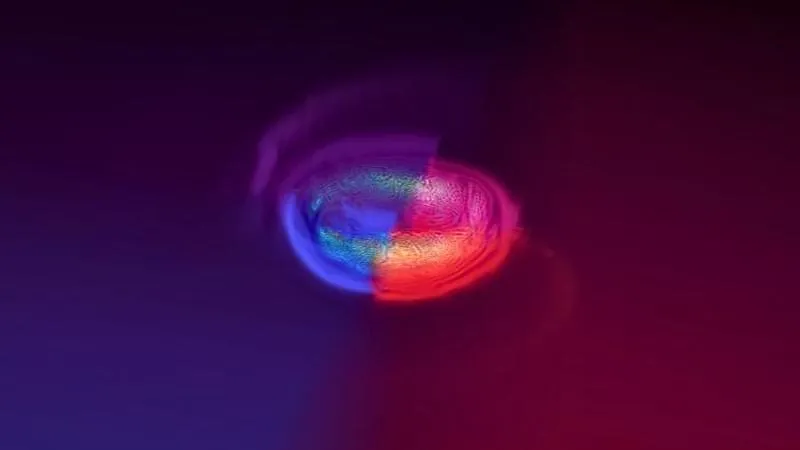
Unlocking Cosmic Secrets: How Neutrinos Shape Neutron Star Mergers
2025-09-20
Author: Rajesh
Explosive Cosmic Collisions Revealed
When two neutron stars collide, they create some of the most energetic events in the universe, producing a plethora of signals that reach Earth. New groundbreaking simulations from a collaboration between Penn State and the University of Tennessee Knoxville have unveiled an unexpected twist in these cataclysmic events: the role of tiny particles known as neutrinos in shaping the merger outcomes.
The Neutrino Mystery Unveiled
The researchers' findings, published in *Physical Review Letters*, mark a pioneering effort to simulate the transformation of neutrinos during neutron star mergers. Neutrinos are elusive particles that barely interact with matter and exist in three distinct flavors: electron, muon, and tau. Remarkably, under extreme conditions found inside neutron stars, these neutrinos can change their flavor, affecting their interactions and the dynamics of the merger.
What Makes This Research Groundbreaking?
Until this study, previous neutron star merger simulations did not account for the flavor transformation of neutrinos, primarily due to the rapid timescale over which this occurs and limited understanding of the underlying physics. Yi Qiu, a graduate student involved in the research, explains that these newly simulated scenarios reveal how neutrinos’ mixing influences not just the ejected matter but also the structural composition of the remaining stellar remnant.
Impact on Heavy Element Creation
The simulations demonstrated that variations in neutrino mixing location and timing result in different compositions of the debris from these spectacular collisions. The neutron star’s neutrons can interact with other atoms, setting off a chain reaction that leads to the formation of heavier elements like gold and platinum—essential materials found in many everyday technologies, from smartphones to electric vehicle batteries.
Neutrino Transformations and Element Production
David Radice, an associate professor of physics, pointed out that the flavor changes of neutrinos directly affect how many neutrons are available in the environment. This crucial factor can increase the production of heavy elements by as much as tenfold, shedding light on the cosmic origins of these valuable components.
Changing the Landscape of Cosmic Observations
The effects of neutrino mixing also extend to the emissions we can detect on Earth. These include gravitational waves, which are ripples in spacetime, along with electromagnetic radiation like X-rays and gamma rays. With advanced detectors such as LIGO, Virgo, and KAGRA, astronomers are primed to detect gravitational waves with unprecedented frequency, making the understanding of these emissions more crucial than ever.
The Road Ahead for Cosmic Research
Qiu expressed that while they've made significant advances, there remains much to explore in the theoretical realm of neutrino transformations. As particle physics continues to evolve, so too will the accuracy of future simulations. With this new technological framework, the team anticipates that other researchers will delve deeper into the complexities of neutrino mixing.
The Final Word: Cosmic Laboratories
Radice concluded that neutron star mergers act as cosmic laboratories, offering vital insights into extreme physics that are otherwise impossible to replicate on Earth. As we further explore these astronomical phenomena, the universe continues to reveal secrets about the fundamental forces that shape it.

 Brasil (PT)
Brasil (PT)
 Canada (EN)
Canada (EN)
 Chile (ES)
Chile (ES)
 Česko (CS)
Česko (CS)
 대한민국 (KO)
대한민국 (KO)
 España (ES)
España (ES)
 France (FR)
France (FR)
 Hong Kong (EN)
Hong Kong (EN)
 Italia (IT)
Italia (IT)
 日本 (JA)
日本 (JA)
 Magyarország (HU)
Magyarország (HU)
 Norge (NO)
Norge (NO)
 Polska (PL)
Polska (PL)
 Schweiz (DE)
Schweiz (DE)
 Singapore (EN)
Singapore (EN)
 Sverige (SV)
Sverige (SV)
 Suomi (FI)
Suomi (FI)
 Türkiye (TR)
Türkiye (TR)
 الإمارات العربية المتحدة (AR)
الإمارات العربية المتحدة (AR)